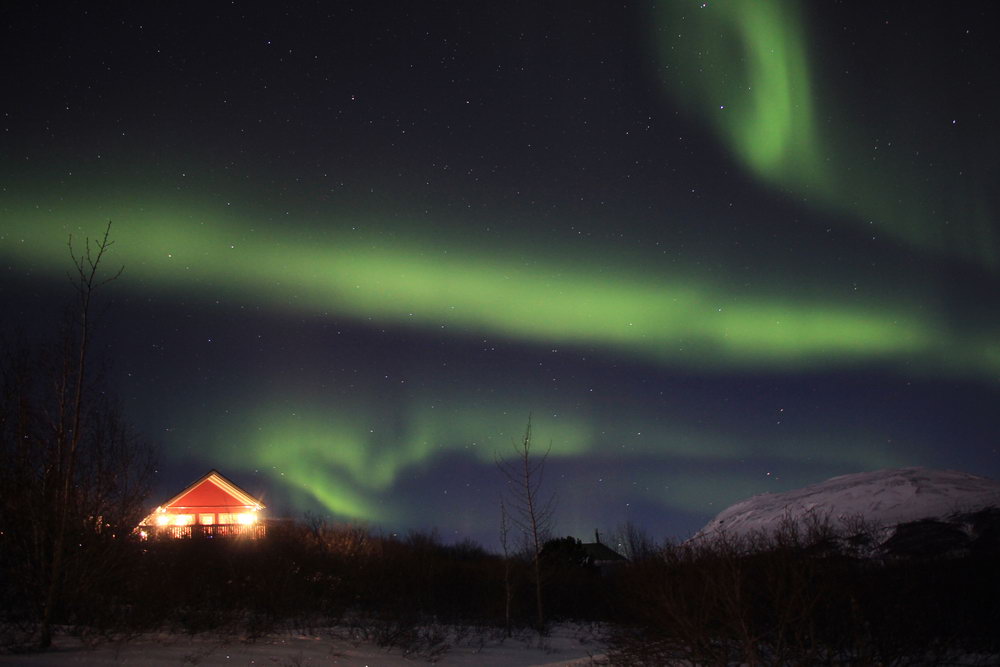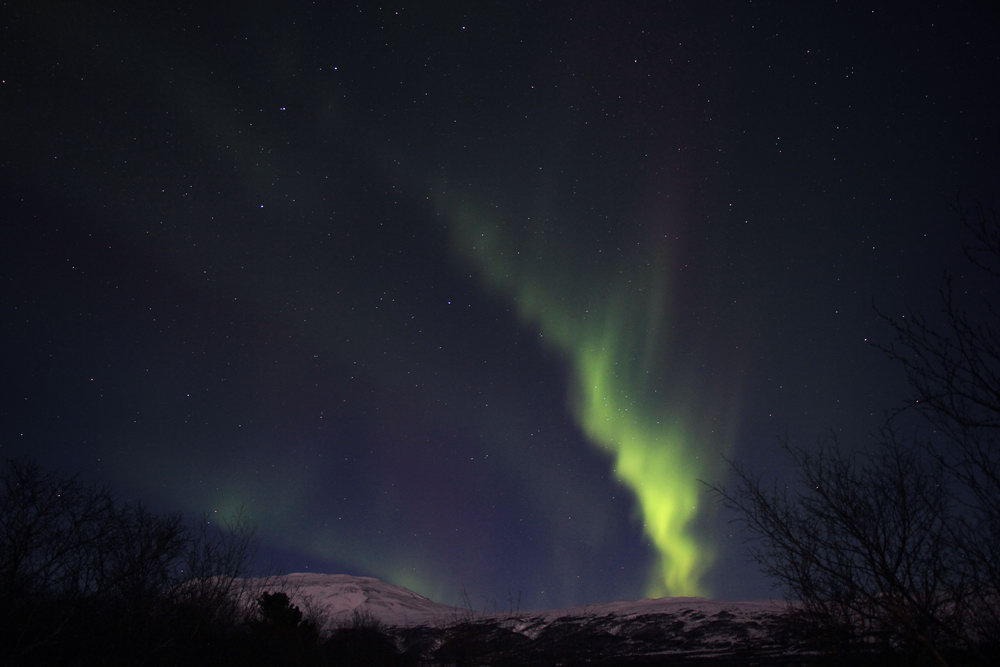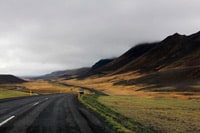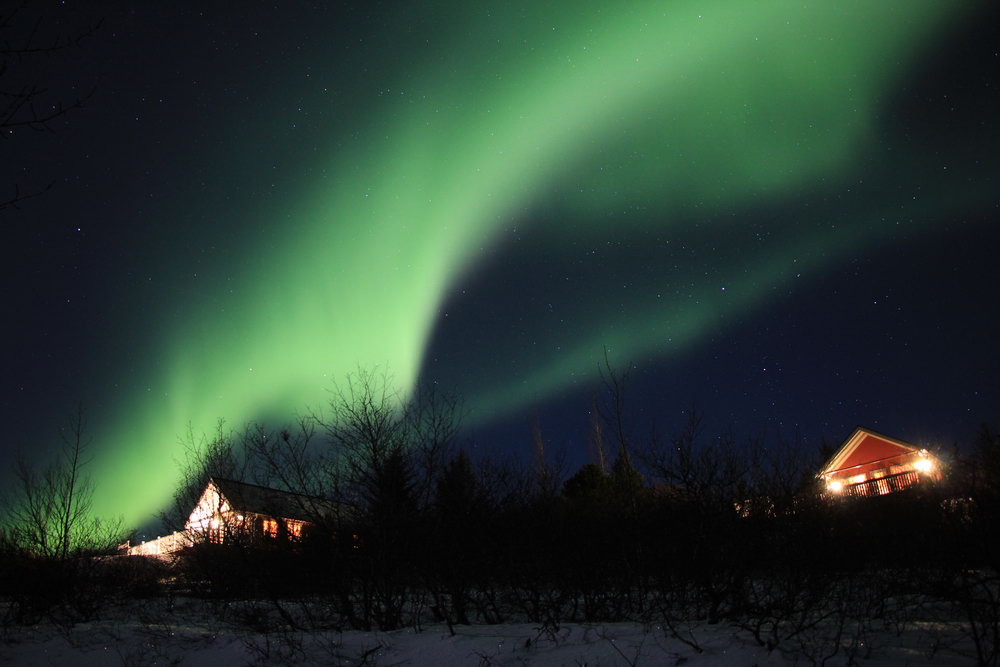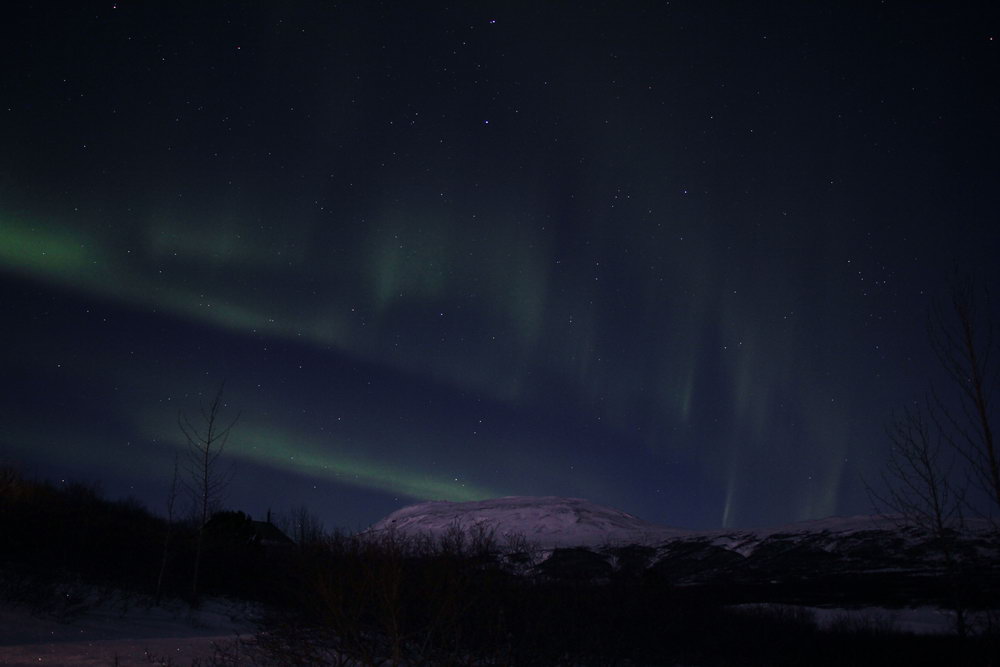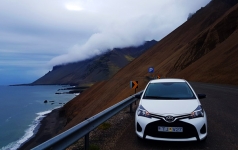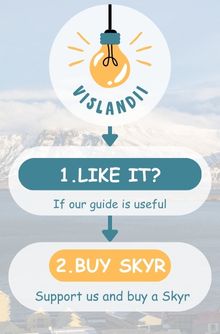The ethereal dance of the Northern Lights, or Aurora Borealis, across the polar skies has captivated humanity for centuries. A celestial spectacle that transcends the ordinary, the Northern Lights evoke wonder and awe. In this comprehensive guide, we embark on a journey to unravel the mysteries of this mesmerizing natural phenomenon. From understanding the science behind the auroras to practical tips on optimal viewing and photography, this ultimate guide is your key to unlocking the enchanting world of the Northern Lights. Join us as we delve into the magic and science that converge in the dark, polar nights, where the sky comes alive with vibrant hues, creating an unparalleled display that lingers in the memory of those fortunate enough to witness it.
- What are the Northern Lights and where can they be observed?
- When do the Northern Lights appear?
- When is the optimal time to visit Iceland for Northern Lights viewing?
- At what time of day are the Northern Lights visible?
- Where to check the Northern Lights forecast
- Where are the prime locations for observing and photographing the Northern Lights?
- How much time should you allocate in Iceland to witness the Northern Lights?
- Choosing Between a Guided Tour or Independent Exploration for Northern Lights Viewing
What are the Northern Lights and where can they be observed?
The Northern Lights manifest as radiant bursts of light dancing across the sky or as vibrant curtains shimmering with various hues, predominantly green but also encompassing colors like purple, red, pink, orange, and blue. The specific color is contingent upon the ionized particles of the respective chemical elements.
Frequently referred to as the Aurora Borealis, these celestial displays are termed aurora borealis or northern lights in English.
The appearance of the Northern Lights is intricately tied to the sun, a hot sphere of gas comprised mainly of hydrogen and helium atoms. The sun's outer layers, or solar corona, continuously release elementary particles and atom fragments into space, collectively forming the solar wind.
Upon reaching Earth, the solar wind particles become ensnared by the planet's magnetic field, which is most potent at the North and South poles. Earth's magnetic attraction appears to draw in these charged particles, guiding them along magnetic field lines that converge underground near the magnetic poles.
Earth's atmosphere, primarily composed of nitrogen and oxygen, plays a pivotal role in the light display. As solar wind electrons and protons, captured by Earth's magnetic field, collide with atmospheric molecules, they either release or absorb solar wind particles, concurrently emitting photons of light. Different gases produce photons of distinct energies and colors upon collision.
Notably, nitrogen collisions emit blue, violet, or red light, while oxygen collisions result in the emission of green and red light.
Contrary to common belief, the occurrence of vibrant flashes in the sky is not guaranteed every night. It hinges on the initial ejection of particles from the Sun, which take approximately 3-5 days to reach the upper layers of Earth's atmosphere.
Given Earth's dual poles, the luminous spectacle is not confined to the northern hemisphere and is more aptly designated as "Aurora Borealis." It is most splendidly observed at latitudes above 67-70°, with proximity to the poles enhancing visibility. However, in the sparsely populated Southern Hemisphere, the southern lights, though existing, are scarcely accessible for observation. Conversely, the more densely populated Northern Hemisphere offers awe-inspiring views of the aurora in numerous countries such as Norway, Finland, Iceland, Greenland, Russia, the USA, and Canada. The farther north one ventures, the more spectacular the aurora becomes.
Iceland, nestled in the Atlantic Ocean near the Arctic Circle at 65° north latitude, stands out as a premier destination for Northern Lights enthusiasts. Boasting a relatively mild winter climate, with temperatures rarely dipping below minus five degrees in Reykjavik, Iceland provides an ideal vantage point for experiencing this celestial phenomenon.
When do the Northern Lights appear?
The Northern Lights, or aurora (as they also occur in the Southern Hemisphere), are predominantly observed during winter due to the extended darkness, making them clearly visible against the night sky.
Nevertheless, they can be seen throughout the year, even in summer when nights are not excessively bright. However, during summer, the prolonged daylight hours, lasting up to 20 hours in the northern hemisphere, make them challenging to observe. The sun's illumination renders them practically invisible. Additionally, in the southern hemisphere, there are few populated areas near the south pole or beyond the Arctic Circle.
In the case of Iceland, the optimal season for witnessing the Northern Lights is from September to April when the nights are sufficiently long. The prime months for observation are from September to March.
When is the optimal time to visit Iceland for Northern Lights viewing?
As previously mentioned, the prime period to witness the Northern Lights in Iceland spans from autumn to the spring equinox, encompassing the months of September through March.
Winter presents a favorable scenario with fewer tourists in Iceland, translating to cost advantages in terms of plane tickets, accommodations, and car rentals. Moreover, Iceland experiences relatively mild winter temperatures, rarely dipping below minus five degrees, except in mountainous areas.
Syncing your trip with the lunar phases enhances the experience, with moonless nights being ideal for observing the aurora against the backdrop of exceptionally dark skies.
Solar activity plays a crucial role, influencing the brightness of the display. Following the release of charged particles from the Sun's surface, it takes 3-5 days for them to reach the upper layers of Earth's atmosphere.
Weather in Iceland. Best season for traveling in Iceland
When to go to Iceland, when it is warm here, when is the best season? These questions bother everyone who is going to go to Iceland. In summer it is warm and there is ...
At what time of day are the Northern Lights visible?
The Northern Lights can manifest at any time of day, without specific restrictions, although certain periods are more favorable for observation. The crucial factor is darkness, which is contingent on the sunset time for a given day.
The highest frequency of successful sightings has been documented between 10 pm and midnight. However, this can be attributed more to the reluctance of individuals to wait for the aurora until 3 am than to a specific time frame for the phenomenon's occurrence.
Where to check the Northern Lights forecast
The forecast and intensity of the Northern Lights in Iceland can be verified on this website:
In addition to the intensity, you can also examine the likelihood of the Northern Lights occurring near Reykjavik or other places. If the probability of the Northern Lights appearing on a scale of one to ten is higher than four, and the sky is expected to be relatively cloudless, the night is suitable, and you should be prepared.
Each site monitors the K-index, an index of magnetic activity, with values ranging from 1 to 9, where one signifies calm conditions and nine indicates electronic failure. If the K-index reaches a value of 4-5 or higher, it's advisable to pack your things and head north.
Solar activity data from Lancaster University, UK: AuroraWatch
Northern Lights forecast for the coming days: Aurora Service
There are also smartphone applications available for iOS and Android with the Northern Lights forecast.
Facebook group where participants report Northern Lights in different regions of Iceland: Northern Lights Alert
Where are the prime locations for observing and photographing the Northern Lights?
To enhance your chances of witnessing the aurora, adhere to a few straightforward guidelines outlined below.
First and foremost, patience and luck are essential. Additionally, consider the following conditions:
- Choose your trip between November and March.
- Opt for the darkest nights: Avoid full moon nights, as moonlight can obstruct the aurora spectacle.
- Minimize artificial light interference: Seek out the least illuminated areas. City lights contribute to light pollution, diminishing the contrast of the night sky and making the aurora less visible. The larger the city, the farther you should travel from it—approximately 5-10 km from a small village and at least 50 km from a city.
- Avoid cloudy skies: Clouds obstruct the view of the Northern Lights, which glow at altitudes exceeding 100 km. Winter, with its frosty days and cold spells, offers a higher likelihood of clear skies.
- Monitor solar activity: Strong solar activity is crucial. Keep an eye on solar flares, as the release of particles from the Sun is a primary condition for the aurora. Following a solar release, you have a window of two to five days to reach the desired latitudes. The more powerful the ejection, the greater the likelihood of witnessing the aurora. Numerous observatories worldwide track space weather, and we've provided links above where you can access this data.
How much time should you allocate in Iceland to witness the Northern Lights?
Due to the unpredictable nature of the aurora borealis (with forecasts extending only around 3-5 days), determining the exact duration needed to witness this phenomenon is challenging. However, insights from numerous experiences suggest the following observations:
- A 3-night stay in Iceland provides a 66% chance of encountering the Northern Lights.
- Extending your visit to 5 nights increases the probability to around 90%.
There's also a certain cyclical pattern to the appearance of the aurora - it may manifest for 2-3 consecutive nights, followed by a pause of 4-5 nights before the cycle repeats. However, it's important to note that this pattern doesn't consistently hold true.
How to Capture Stunning Photographs of the Northern Lights
To capture compelling photographs of the northern lights, ensure you have the following:
-
Tripod: Given that the phenomenon occurs at night and requires a slow shutter speed, a tripod is indispensable for obtaining sharp images.
-
Remote Control for the Camera: To prevent unintentional camera movement when pressing the shutter button during a shot, it's advisable to use a remote control connected to the camera. Alternatively, if a remote control is unavailable, utilize the camera's shooting delay function.
-
Camera: Opt for a camera with a sufficient aperture, as you'll be shooting in low-light conditions. Common settings include ISO 800 to 3200, an aperture ranging from f/2.8 to f/5.6, and a shutter speed between 15 to 30 seconds. However, these settings can vary based on specific conditions, so don't hesitate to experiment.
-
Foreground Elements: Enhance your northern lights photos by incorporating an interesting foreground. Examples include a frozen waterfall, a snow-covered rock, or a lake or river reflecting the lights.
For more in-depth guidance on capturing exceptional shots, refer to this resource: Photographing the Northern Lights.
Choosing Between a Guided Tour or Independent Exploration for Northern Lights Viewing
For those seeking to witness the northern lights, two options are available: joining a tour organized by a travel agency or embarking on an independent adventure. Each option comes with its own set of advantages and drawbacks.
Opting for a guided tour offered by travel agencies presents certain benefits. Notably, these tours often include convenient transfer services to designated shooting locations, eliminating concerns about transportation. Travel agencies typically possess prior knowledge of optimal times and locations for capturing impressive photos. However, drawbacks include potential time constraints and limitations on choosing specific destinations.
Alternatively, individuals may choose to go on their own, a decision that offers unparalleled freedom. When driving independently, you are not bound by group dynamics or schedules. However, the entire logistical responsibility falls on your shoulders.
Car rental in Iceland - tips and tricks
Rent a car in Iceland - how to choose proper car, what is the cost of renting a car, is it worth taking full insurance, where you can drive a car, and where you have t...
For those interested in guided tours, options can be explored here. Costs for these tours can be relatively high, with an average tour from Reykjavik ranging between $40-50.
Ultimately, the decision between a guided tour and independent exploration depends on personal preferences and the level of control and flexibility you desire during your northern lights experience.
Essentials for Northern Lights Watching
When preparing for a Northern Lights excursion, consider bringing the following items:
-
Warm Clothing: Despite Iceland's relatively mild climate, prepare for cold temperatures and strong winds by wearing layers. Include a hat and warm gloves for added comfort.
-
Sturdy Footwear: Expect snowy conditions, so opt for warm, high boots that are also waterproof to keep snow out.
-
Camera Equipment: Bring a photo and video camera based on your preferences. To capture clear images with both the foreground and the Northern Lights, a tripod is essential.
-
Spare Batteries: Cold weather and long exposure times can deplete camera batteries swiftly. Ensure you have extra batteries to avoid missing key moments.
-
Memory Cards: Bring ample memory cards to accommodate the numerous shots you might take during the spectacle.
-
Snacks: Pack a sandwich or something sweet to curb hunger in the chilly weather.
-
Thermos with Tea or Coffee: A warm drink from a thermos can be comforting during the wait for the Northern Lights show.
-
Flashlight: A flashlight is handy for navigating to a prime viewing spot and setting up your camera efficiently.

